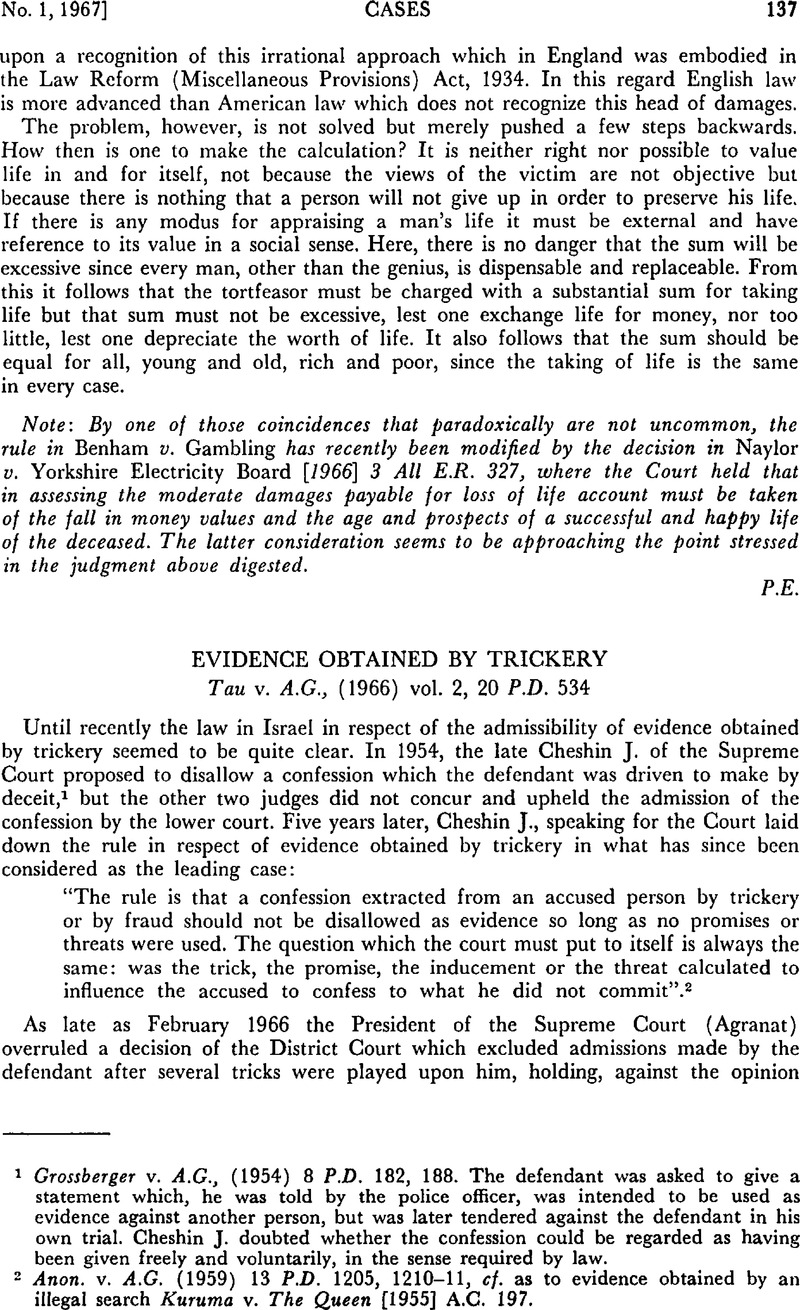No CrossRef data available.
Article contents
Evidence Obtained by Trickery
Published online by Cambridge University Press: 12 February 2016
Abstract

- Type
- Cases
- Information
- Copyright
- Copyright © Cambridge University Press and The Faculty of Law, The Hebrew University of Jerusalem 1967
References
1 Grossberger v. A.G., (1954) 8 P.D. 182, 188. The defendant was asked to give a statement which, he was told by the police officer, was intended to be used as evidence against another person, but was later tendered against the defendant in his own trial. Cheshin J. doubted whether the confession could be regarded as having been given freely and voluntarily, in the sense required by law.
2 Anon. v. A.G. (1959) 13 P.D. 1205, 1210–11, cf. as to evidence obtained by an illegal search Kuruma v. The Queen [1955] A.C. 197.
3 Anon. v. A.G. (1966) vol. 2, 20 P.D. 365, 374.
4 Tau v. A.G. (1966) vol. 2, 20 P.D. 539.
5 A.G. v. Kenan (1953) 7 P.D. 619, 643–4; cited by President Agranat with approval.
6 At the end of his judgment the President remarked that he would have expected prosecuting counsel in the court of first instance to refrain from producing the admission in question as evidence against the defendant. This remark should not be taken as a proposal to endow the prosecution with the authority and duty to exclude evidence improperly obtained, while the courts still adhere to the policy of not asking how the evidence was obtained. Such a course would be objectionable for several reasons.
7 See n. 2.
8 This contention has some support in the language of the caution administered to the accused under the Judges' Rules: “Do you wish to say anything in answer to the charge? You are not obliged to say anything unless you wish to do so, but whatever you say will be taken down in writing and may be given as evidence.” The last part of the caution does not caution the accused against involuntary statements but informs him of the true purpose in taking it and its nature as admissible evidence, so that he can make up his mind whether to give the statement or not in view of this decisive fact.
9 See, however, Williams', Glanville arguments in (1955) Crim. L.R. 339, 345–6Google Scholar.
10 48 S. Ct. 564, 569. The judgments are given with regard to evidence obtained by commission of an offence, but they are relevant with the same force to other forms of trickery as well.
11 Ibid., 574–75.
12 Artsi v. A.G. (1966) vol. 1, 20 P.D. 225, quoted with approval by President Agranat in Tau.
13 Ibid.
14 Following R. v. Thomas (1836) 173 E.R., R. v. Reason (1872) 12 Cox C.C. 228; and R. v. James Alice (1909) 2 Cr. App. R. 319, C.C.A.
15 [1955] A.C. 197. Cheshin J. cited it in his judgment in connection with another point.
16 [1963] 3 All E.R. 677, 681.
17 Emphasis added.
18 See cases referred to in Kuruma v. The Queen [1955] A.C. 197, 200.


